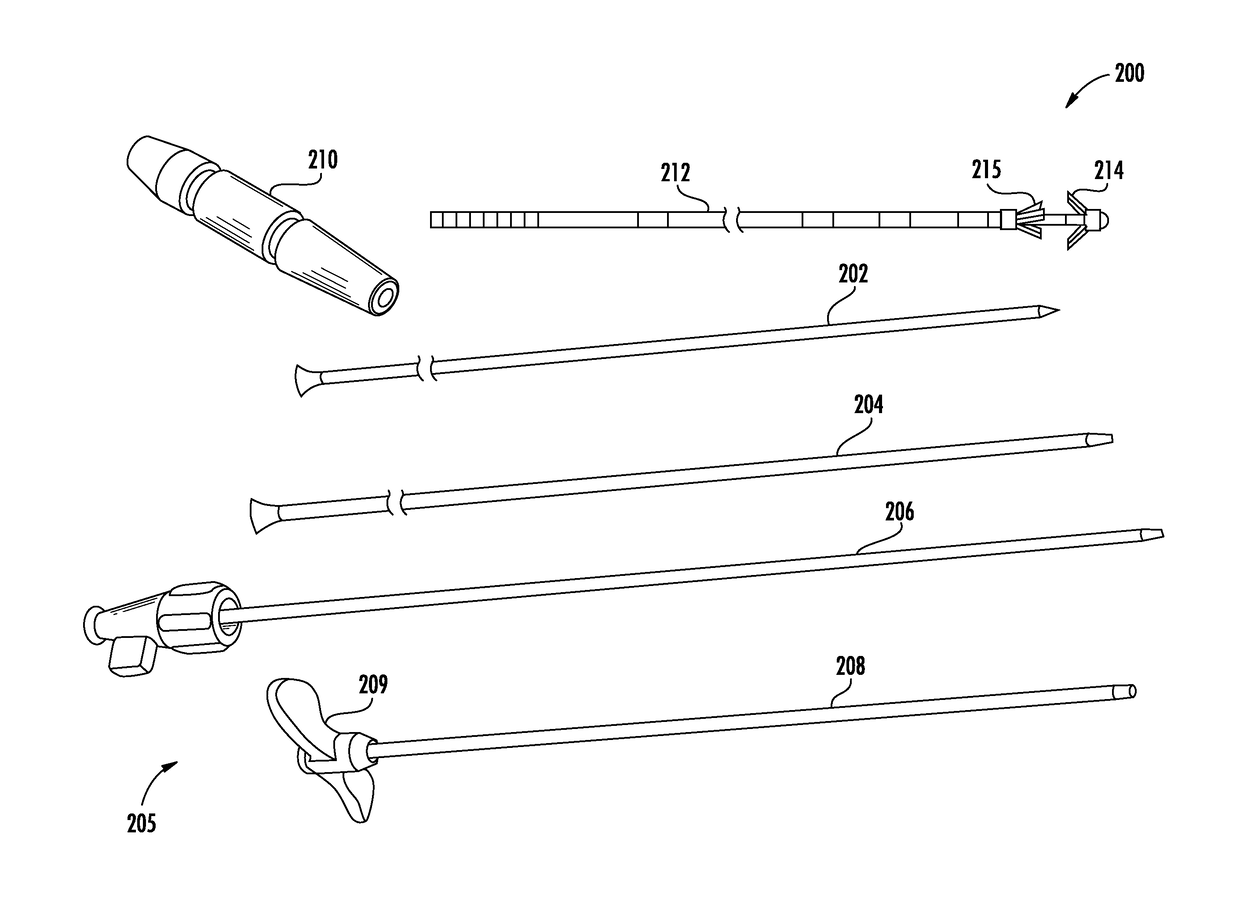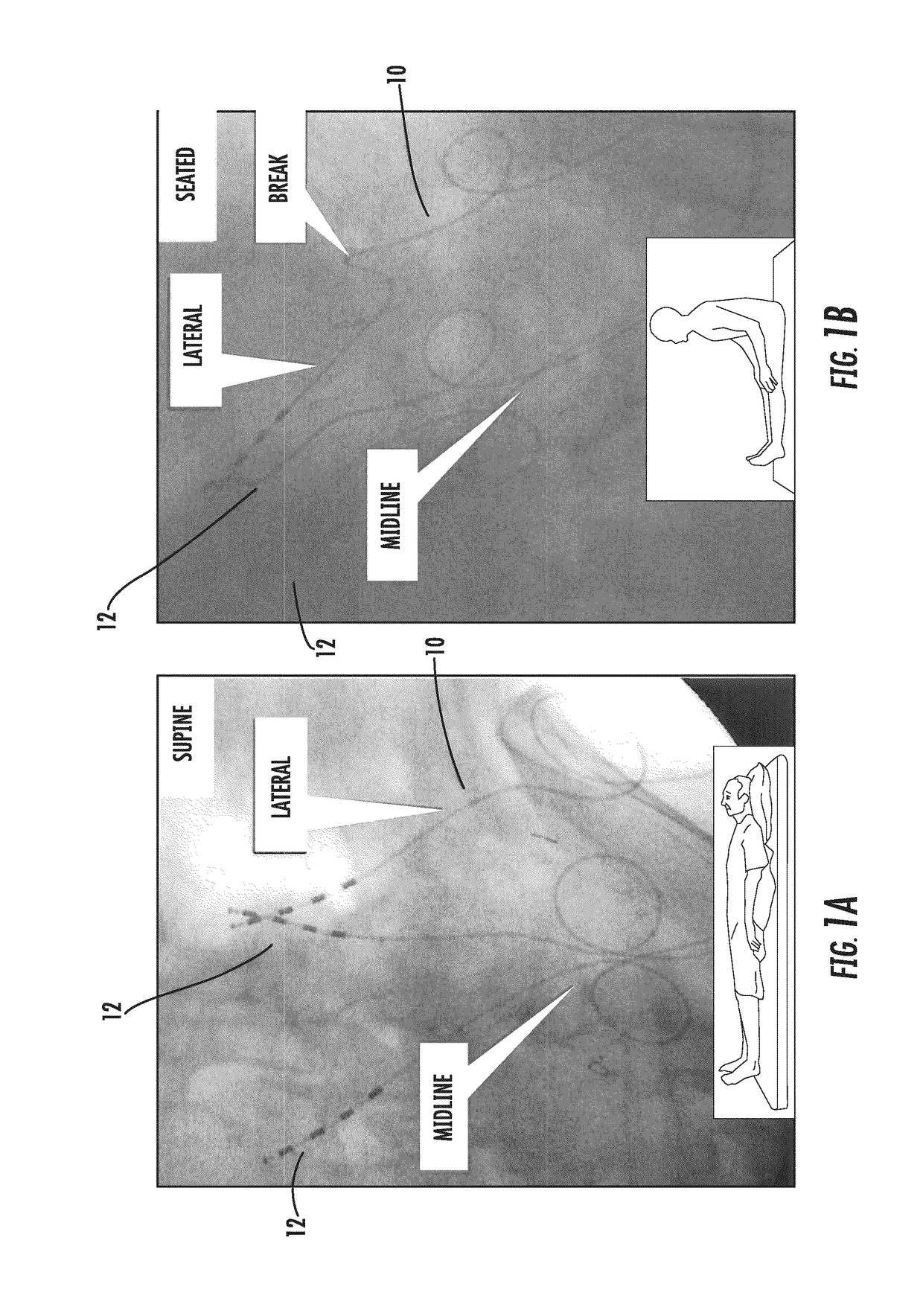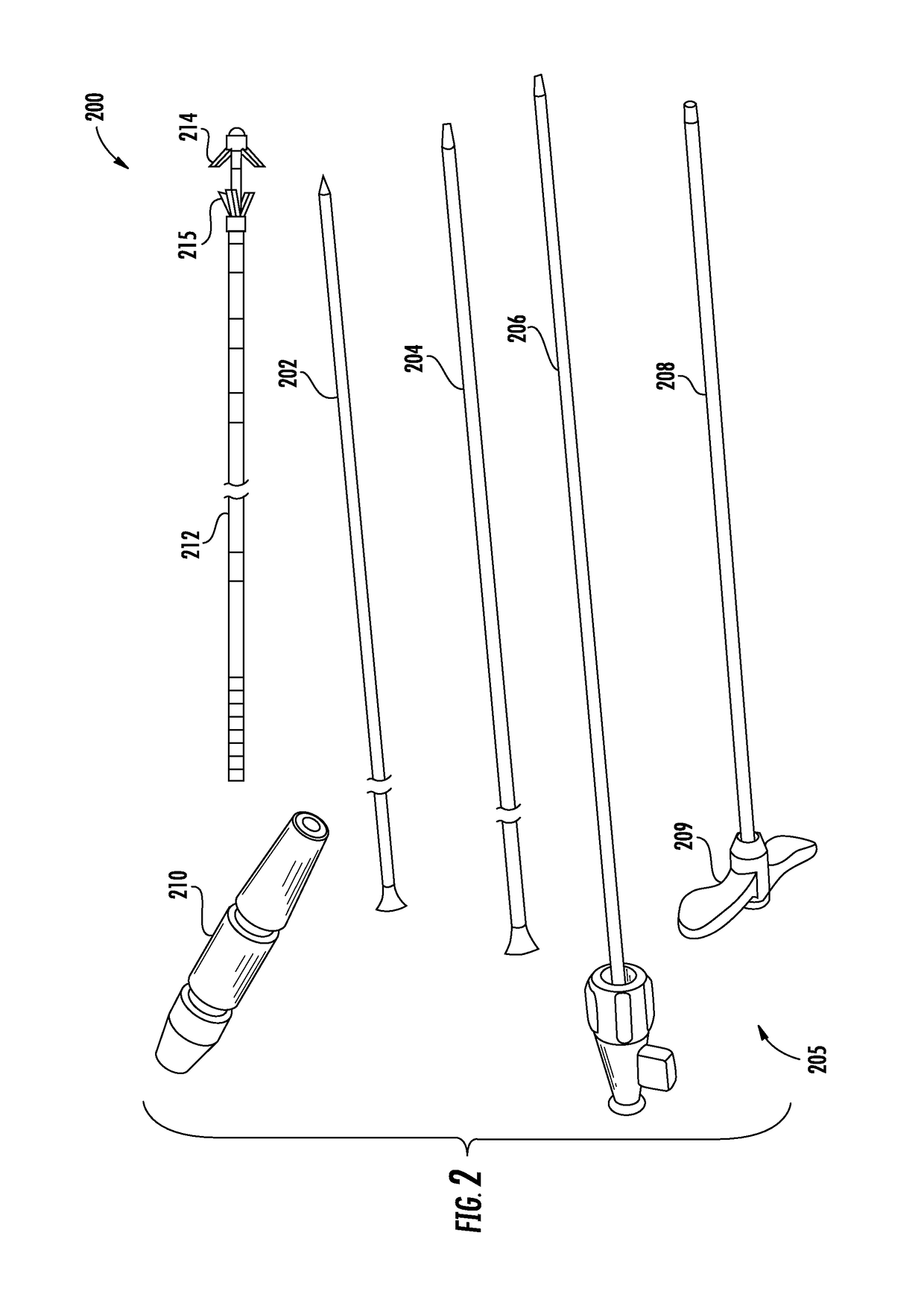Systems and methods for enhanced implantation of electrode leads between tissue layers
a technology of electrode leads and tissue layers, applied in the field of systems and methods for implanting electrode leads for neuromuscular electrical stimulation, can solve the problems of spinal stabilization system dysfunction, back pain, and corrupt signal transduction, and achieve the effects of restoring muscle function to the lumbar spine, reducing the risk of a high stress location, and enhancing the implantation of electrode leads
- Summary
- Abstract
- Description
- Claims
- Application Information
AI Technical Summary
Benefits of technology
Problems solved by technology
Method used
Image
Examples
Embodiment Construction
[0044]The systems and methods of the present disclosure may provide efficient implantation of an electrode lead in a midline-to-lateral manner such that the implanted lead may be secured within the patient and used to restore muscle function of local segmental muscles associated with the lumbar spine stabilization system without disruption of the electrode lead post-implantation due to surrounding anatomical structures. In accordance with the principles of the present disclosure, the systems and methods may be optimized for use in restoring muscle function to the lumbar spine to treat, for example, low back pain.
[0045]Referring to FIGS. 1A and 1B, a comparison of traditional implantation methods and the exemplary method in accordance with the principles of the present disclosure is provided. FIGS. 1A and 1B illustrate x-ray images of the lumbar region of a cadaver with electrode lead 10 and electrode leads 12 implanted therein. Electrode lead 10 was implanted via traditional methods...
PUM
 Login to View More
Login to View More Abstract
Description
Claims
Application Information
 Login to View More
Login to View More - R&D
- Intellectual Property
- Life Sciences
- Materials
- Tech Scout
- Unparalleled Data Quality
- Higher Quality Content
- 60% Fewer Hallucinations
Browse by: Latest US Patents, China's latest patents, Technical Efficacy Thesaurus, Application Domain, Technology Topic, Popular Technical Reports.
© 2025 PatSnap. All rights reserved.Legal|Privacy policy|Modern Slavery Act Transparency Statement|Sitemap|About US| Contact US: help@patsnap.com



